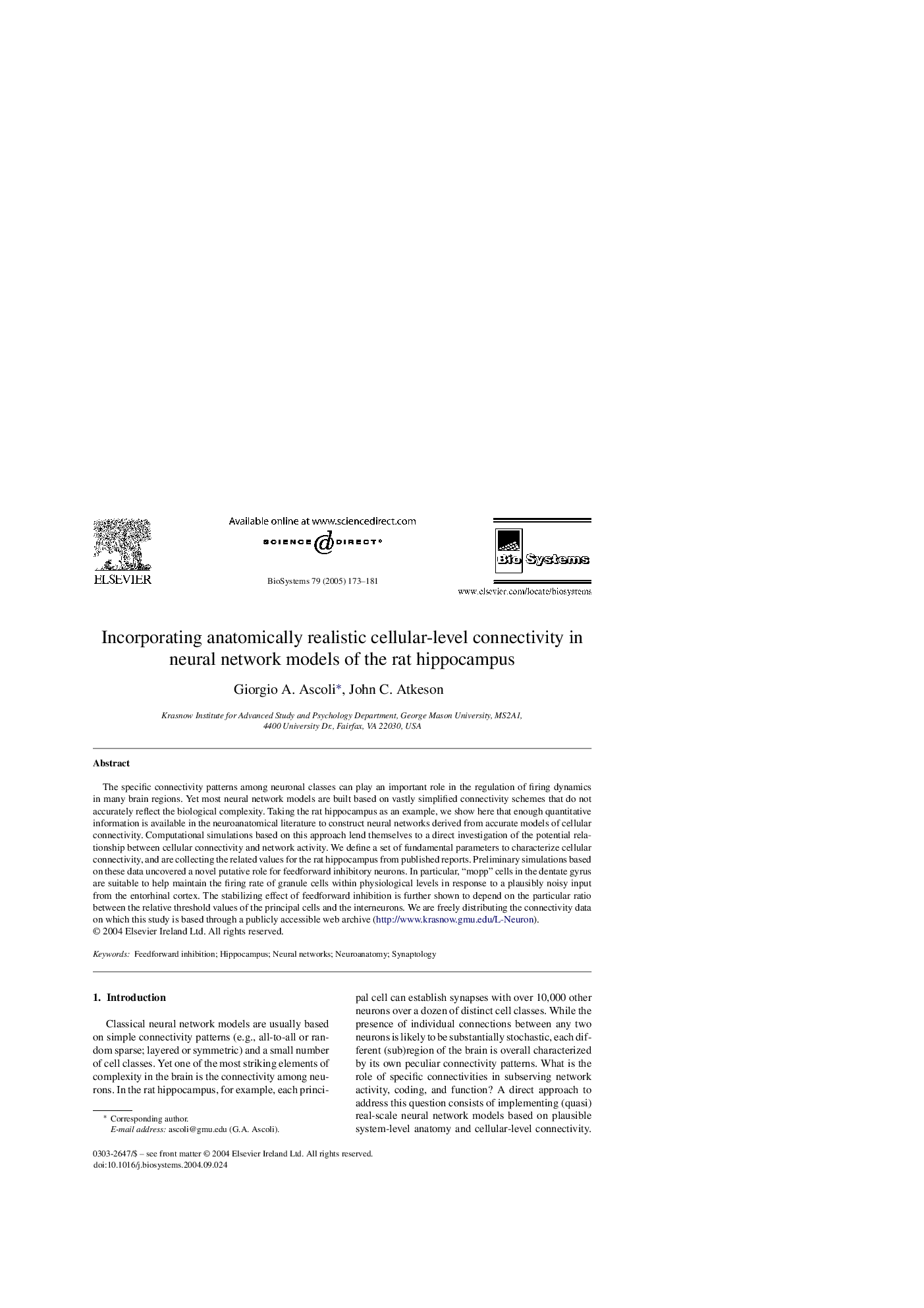| Article ID | Journal | Published Year | Pages | File Type |
|---|---|---|---|---|
| 9900965 | Biosystems | 2005 | 9 Pages |
Abstract
The specific connectivity patterns among neuronal classes can play an important role in the regulation of firing dynamics in many brain regions. Yet most neural network models are built based on vastly simplified connectivity schemes that do not accurately reflect the biological complexity. Taking the rat hippocampus as an example, we show here that enough quantitative information is available in the neuroanatomical literature to construct neural networks derived from accurate models of cellular connectivity. Computational simulations based on this approach lend themselves to a direct investigation of the potential relationship between cellular connectivity and network activity. We define a set of fundamental parameters to characterize cellular connectivity, and are collecting the related values for the rat hippocampus from published reports. Preliminary simulations based on these data uncovered a novel putative role for feedforward inhibitory neurons. In particular, “mopp” cells in the dentate gyrus are suitable to help maintain the firing rate of granule cells within physiological levels in response to a plausibly noisy input from the entorhinal cortex. The stabilizing effect of feedforward inhibition is further shown to depend on the particular ratio between the relative threshold values of the principal cells and the interneurons. We are freely distributing the connectivity data on which this study is based through a publicly accessible web archive (http://www.krasnow.gmu.edu/L-Neuron).
Related Topics
Physical Sciences and Engineering
Mathematics
Modelling and Simulation
Authors
Giorgio A. Ascoli, John C. Atkeson,
